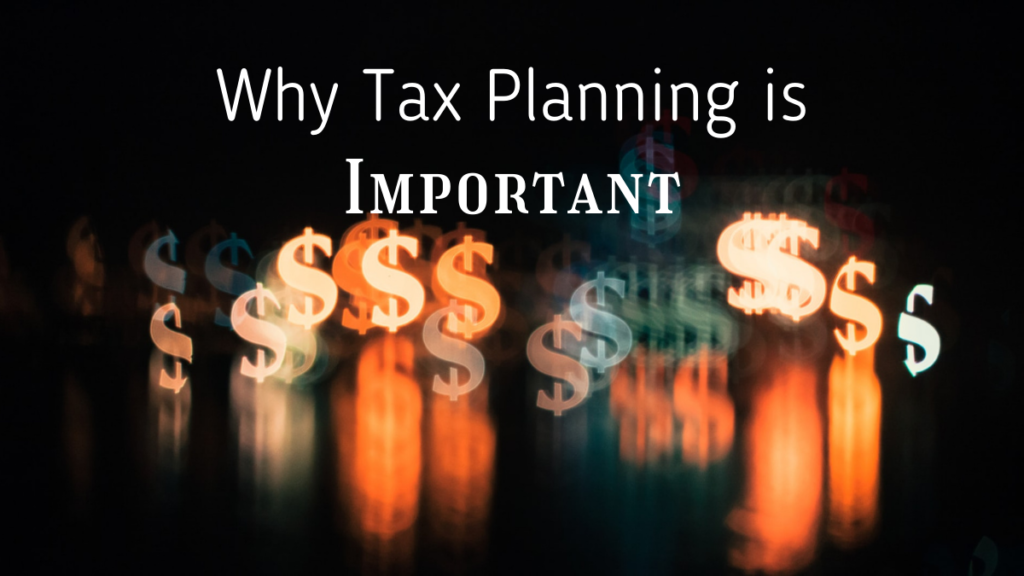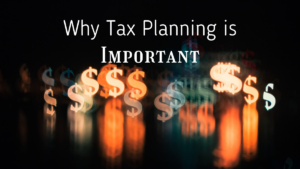
As wealth managers, we talk a lot about proactive tax planning and the importance of taking the time to create more favorable tax outcomes. With that said, why aren’t more individuals getting involved in the process?
The primary reason for the lack of tax planning can be attributed to the constant change in tax laws and the difficulty it presents in keeping up with all these changes. It can be an overwhelming challenge, especially for those preparing their own tax returns.
We all have complex and often busy lives and when the IRS changes the rules every four years, and sometimes more often than that, it is easy to understand why people tend to give up. The problem is further magnified because it is not always easy to visualize the cost of not paying attention to these changes.
We all scrutinize our annual property tax bill when it arrives from the County Assessor’s office, so why not pore over your annual income tax picture to make certain you are doing all you can to reduce your liability to the IRS? If designing a more tax efficient strategy could improve your retirement planning outcomes, would that make proactive tax planning more attractive to you?
Tax planning can take on a multitude of strategies. The objective is to reduce your taxable income by way of exemptions and deductions, and there are short- and long-term planning strategies. You should be diligent in planning your finances in such a way that attracts the least amount of tax, either by deferral, deduction, or reduction.
Here are a few basic short-term strategies that should be considered when assessing your tax picture:
- Add municipal bonds to your portfolio, if tax-free income is what you seek.
- Open a ROTH IRA, if tax-free growth is important to you, especially during an environment of increasing tax rates.
- Consider maximum allowable contributions to your retirement accounts, for the tax deferral, deduction, or tax-free growth benefits.
- Start a business where a SEP IRA or a Solo 401k becomes an option for maximum contributions that provide either a tax deduction or tax-free growth with a ROTH option, or both, when you include an employer match. As a business owner, you can take advantage of home office deductions as well, which will also reduce your total tax obligation.
- Fund an HSA (health savings account) if you have a high-deductible health plan which provides a tax deduction on contributions. For tax year 2021, the maximum contribution is $3,600 for individuals and $7,200 for families. With catch-up contributions of $1,000 if you’re over 55 years old.
- Hold your investments for a minimum of one year for a more preferential Long-Term Capital Gains tax rate.
- Be aware of tax credits such as the Earned Income Tax credit, the American Opportunity Tax credit, the Saver’s Credit, the Child and Dependent Care Credit, and a plethora of Business Tax credits.
- Off-set your realized taxable gains by implementing a strategy known as tax-loss harvesting where you can apply up to a $3,000 per year loss to offset ordinary income on your federal taxes. Anything over a $3,000 per year loss will carry over and will be applied to the following year up to the $3,000 limit.
- Finally, consider adjusting your W-4 withholdings if you would prefer “breaking even” on your annual taxes. This can be done by either decreasing or increasing the number of dependents you claim. The fewer dependents, the more tax withholding and the greater number of dependents, the less tax withholding. This strategy should be reviewed every year based on the previous years’ tax liability or surplus.
Tax planning for retirement focuses on the longer-term picture. It is easy to see how much you have saved for retirement, but there are questions on how your money will be taxed upon withdrawal.
Knowing this information will help you figure out how much you will have to live on after taxes. If your after-tax income seems inadequate, you will need to estimate how much more you will need before retiring so as not to run out of money in retirement. Taxes are a very important factor during retirement.
Here are some key points about taxes in retirement:
- Up to 85% of your Social Security benefits may be taxable depending on your total household income and filing status. If Social Security is your only source of “combined” income, you will likely not owe tax on the income. To the contrary, if you are also living on retirement account distributions, it is likely you will owe tax.
- Distributions from your retirement accounts are generally taxable and the percentage of tax will depend on your combined household income. As previously mentioned, Roth IRAs are not subject to income tax.
- Sources of income are taxed differently. Earnings from employment are subject to income tax, while unearned income from pensions, IRAs, annuities, and other investments are subject to income tax under other IRS rules. It is important to understand the differences.
- Required minimum distributions (RMDs) are required at age 72. These are distributions from retirement accounts where your contributions were either tax deducted or tax deferred from your income. This tax will have to be addressed in retirement to keep your tax liability as low as possible. A ROTH conversion after retirement is a strategy worth considering.
Your tax strategy in retirement will look similar to when you were earning an income. You were obligated to look at all sources of income, apply any deductions or tax credits that you were eligible for, and relate it all to the tax tables available on the IRS website.
Income is taxed at the federal, state, and sometimes local levels so taxes are difficult to avoid, but proactive tax planning can help keep your tax liability to a minimum. It is important to meet with your Financial Advisor, Financial Planner, and/or your CPA to establish a coordinated tax plan for the short- and long-term journey.

